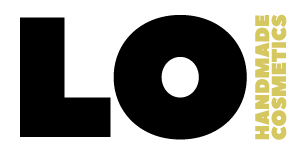We thought that I would good to explain to you about colourants. Now colourants are obviously, as it’s in the name, things that we use to colour bath and body products. So there are three types of colourants that are most typically used. These are Mica, Lakes and water soluble dyes.
Now there’s differences in all three of these, and I’m going to explain to you about them today. There is a fourth, because I will also be talking to you about synthetic Mica, which creates a beautiful shimmer in the water. So I thought it would be fun to point that out. So first off we will talk about Mica.
Mica
Mica is a powdered mineral. It comes in bags or jars typically. This is orchid purple. Mica is very shiny in appearance, can almost have a metallic sort of look to it. And it’s typically used to decorate the tops of products like bath bombs and bubble bars to paint them or add pretty little details, things like that. It’s not very good for colouring your actual bath bombs because typically to get enough colour in your bath bomb or your water, you would be using far too much Mica that it would end up staining your bath.
Mica Colour = Natural mica is usually an off-white mineral and can have brownish tones. To achieve a bright colour pigment is applied to the mica substrate using heat. Micas can be coloured using various dyes and pigments to achieve the desired colour. These colours are lab-made and are not natural.
Most Beginners Start With Mica
So it’s typically not great for colouring bath bombs. I will get a lot of beginners, they will say, “What do you use to colour your bath bombs to get such vibrant colours?” Or, “What will you use to get the tub to turn colour?” Because these people are typically using Micas because it’s the most easily accessible without knowing about soap suppliers and bomb suppliers, things like that.
So I have the same amount on the spoons already Mica, Lake, dye and synthetic Mica. So this is what happens when you mix it with water. So here’s the Mica here. It’s a shimmery powder. We’re just going to mix it in. You’ll see right away. It doesn’t disperse very well in water. It pools on the top and it doesn’t colour the water very well. It does colour the water a little.
If you use enough of it, it will colour, but it’ll leave little speckles, little pools. You can kind of see a film. You can even just look on the spoon. This was what will happen in your bathtub essentially. There are ways to try to kind of get around that. And that’s with using a product called polysorbate 80
Emulsifiers
It will bind to oils and it’ll disperse the Mica in your water typically by binding it with the oil. So that is Mica for you. Now just for fun, I put a little bit of Mica in a little cuppy and I have here 99% rubbing alcohol. Now, if you are going to use Mica to paint your bath bombs or your bubble bars, you typically mix just a little bit of rubbing alcohol with Mica to make kind of like a paint for yourself. And this is what you use to decorate. Now when using alcohol to paint your bath bombs or your bubble bars, you want to be using higher than 90%. Otherwise, it’ll have too much water content and it’ll activate your bath bombs. Okay? So next up are Lakes.
Lakes
This is perfect purple Lake, Lakes are, if I’m correct, aluminium salts, I think is what the colour is bound to. They bind with oil similar to Mica. They give off a lot more colour than Mica will. They will colour bath bombs beautifully, but you do have to use polysorbate 80 as well to not stain someone or leave a ring around a tub. So it’s a… I wouldn’t necessarily use it if you’re a beginner. It’s more kind of like, you need to experiment with your recipe and polysorbate 80 and what not to get it to work just right and not stain you or people or your bath. But it is a really good option and it’s vibrant and it’s really good.
So I have some Lake here and you’ll see what I mean when you mix it with water. Now see, this is what I mean when I say it’s oil dispersible. When you mix it into water, it kind of takes some work to get it to colour. So you can see right away that it will stain if you don’t use polysorbate 80. It is concentrated so that was the same amount that I used of Mica.
And it’s much more vibrant, but you do need to use the polysorbate 80 to prevent staining. So it can be scary if you use too much of a Lake. So the next colourant that we will talk about is water soluble dye.
A lake colour = A Lake pigment is an insoluble material that colours by dispersion. Lakes are basically a pigment which has been manufactured from a dye by precipitating a soluble dye with a metallic salt. The resulting pigment is called a lake pigment
Water Soluble Dyes
This is Amethyst from Fizz Fairy. Now these water soluble dyes, they are a powder form. The colour that you see in the powder will not necessarily represent the colour that will come out in the water. Water soluble dyes always show their true colours in water because essentially they’re water soluble. When you’re using water soluble dyes in a bath bomb, your bomb might not look vibrant if you’re just mixing it into your dry ingredients, the dye, rubbing it, whatever. You’ll get a nicely coloured bath bomb. It might not look that vibrant, but once it hits the water, the vibrancy will be there. The colour will come right off your bath bomb.
Your water will be amazingly coloured and it will be wonderful. Now, if you want the same vibrancy that you would get from a Lake in your initial bath bomb, then you need to bloom your baking soda. What I mean by blooming your baking soda is you take your water soluble dye. You mix it into some hot water and you make yourself essentially water, coloured water. Right? Now you mix the water into your baking soda and you mix it and mix it and mix it until your baking soda is a vibrant, beautiful colour.
water soluble dyes = A range of vibrant water soluble dyes with many purposes. Mostly for use in Bath Bombs, Soaps, Bubble bars, Whipped Soap, Sugar Scrubs etc.
Blooming Baking Soda
But now your baking soda is very wet. It’s bloomed. So you have to leave it out to dry. I would say 24 to 48 hours. And then once you do, you will have coloured baking soda that you can now use to make your bath bombs. Now just as an example, I have some bloomed baking soda here. So this is me using yellow. You see it’s in some clumps because when it does dry, you might get some clumps, but typically you sift all your ingredients anyway, when you’re making bath bombs.
So it’s not much of a problem. Now I will show you what happens when we mix the water soluble dye. And this is significantly less than I used for the Lake or the Mica. Now this is what happens when we mix it with the water. So you’ll see instant coloor. Now there’s no film. There’s no pooling. There’s just instantly a colour payoff. It won’t stain the spoon, it won’t stain your bath, it won’t stain people. It’s a really good dye to use when making bath bombs.
Synthetic Mica
The next thing I’m going to talk about is synthetic Mica. Now it’s proper name is synthetic fluorphlogopite. It’s is a powder. It is a mineral. It’s very shimmery, very shiny. And when you add it to your water, you get what kind of looks like shimmery lava, beautifulness. Now it is a Mica, so again, you will need to use polysorbate 80 just to be on the safe side to not stain. Well, you wouldn’t typically stain if you’re using white, but just to, not to leave a film or a ring around the tub. So to show you what I mean is we will mix it then we will see. Now, is that not crazy? You get that beautiful lava type water. I don’t think lava shimmers at all, but it’s sparkly fairy mermaid water. The synthetic Mica is a little pricy but does give some great effects
Colourants Conclusion
These are the types of colourants that we typically use. I will typically use water soluble dyes in my bath bombs, in my bubble bars, in my bubble bath. I will not use them in body products like a body butter. I have done that mistakenly the first time I ever made body butter. And it stained someone because water soluble dye on direct contact with skin, so not dispersed in water, will stain.
So it needs to be dispersed in water. So typically in a bath or yeah. For scrubs, things like that, you might use tiny, tiny bit of the water soluble dye because they are kind of water based. But mostly I try to use Micas for body products. And I use Micas in bath oils as well, because it gives that beautiful shimmer. It’s awesome to use Lakes and water soluble dyes together to get really vibrant bombs with really vibrant colour.
If you’re using polysorbate 80 and also adding some shimmer. There are different kinds of shimmer products. There are larger grains that’ll give you more like a glitter effect. This is very fine so it gives you more that shimmer.







No comment